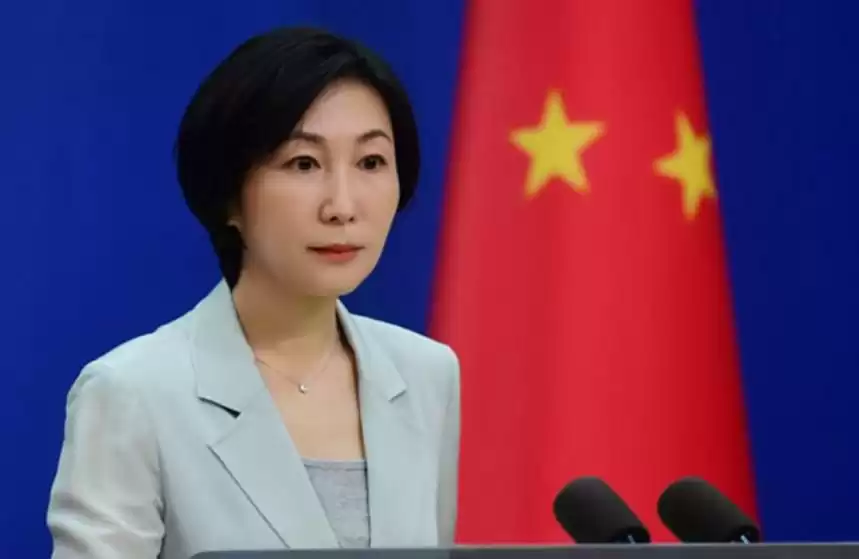Beijing: In a rare admission, China’s ruling Communist Party has acknowledged that its leadership over the People’s Liberation Army (PLA) was lacking for a while and if it had not been solved it would not only have diminished the military’s combat capacity, but also undermined the key political principle that the “Party commands the gun.”
The high-profile Plenum of the Communist Party of China (CPC) held last week adopted the “landmark resolution” of its major achievements in the last 100 years besides clearing the decks for a record third term for 68-year-old President Xi Jinping next year and perhaps beyond.
The resolution also hailed the country’s military for conducting “major operations” on border defence, in a veiled reference to the protracted border standoff with India in eastern Ladakh.
The full text of the resolution released by the CPC on Tuesday night has listed Xi’s contributions in bringing revolutionary changes in the military to make the two million-strong People’s Liberation Army (PLA) a fit and fighting force.
After Xi took over power, China’s defence budget rose steadily, crossing over USD 200 billion this year.
After he took over power in 2012, Xi has repeatedly emphasised that the military should work under the party leadership and not as a separate entity of the government.
“To build strong people’s armed forces, it is of paramount importance to uphold the fundamental principle and system of absolute Party leadership over the military, to ensure that supreme leadership and command authority rest with the Party” and its leadership, the resolution said, echoing Xi’s view.
Unlike other countries where the militaries operate under governments, under the Chinese system the military was supposed to operate under the command of the CPC leadership.
Xi is the General Secretary of the CPC and Chairman of the Central Military Commission (CMC), the overall high command of the Chinese military.
Besides sacking several top Generals for corruption, Xi has virtually carried out a public campaign that the military should function under the party leadership.
In a rare admission of problems between the party and the military, the CPC resolution said, “for a period of time, the Party’s leadership over the military was obviously lacking. If this problem had not been completely solved, it would not only have diminished the military’s combat capacity, but also undermined the key political principle that the Party commands the gun.”
It said that the “armed forces have remained committed to carrying out military struggles in a flexible manner to counter military provocations by external forces, and they have created a strong deterrent against separatist activities seeking ‘Taiwan independence’.”
Without directly mentioning the Chinese military’s aggressive moves in eastern Ladakh along the LAC with India last year, it said the PLA troops have “conducted major operations related to border defence”.
“They have conducted major operations related to border defence, protecting China’s maritime rights, countering terrorism and maintaining stability, disaster rescue and relief, fighting Covid-19, peacekeeping and escort services, humanitarian assistance, and international military cooperation,” it said.
The eastern Ladakh border standoff between the Indian and Chinese militaries erupted on May 5 last year following a violent clash in the Pangong lake areas and both sides gradually enhanced their deployment by rushing in tens of thousands of soldiers as well as heavy weaponry.
The CPC resolution said the Chinese military has taken concrete actions to safeguard national sovereignty, security, and development interests.
“The people’s armed forces have strengthened their strategic forces and new-domain forces with new combat capabilities, and they have improved command systems and capacity for joint operations,” it said.
“They have worked hard to address ‘peacetime ills’, vigorously strengthened training under combat conditions, and built strong, well-structured, and modern border defence, coastal defence, and air defence systems,” it said.
The section of the resolution on the military titled “Strengthening national defence and the armed forces” has outlined the objectives set by Xi for strengthening the military and defined China’s military strategy for the new-era. The resolution said the PLA has formulated a three-step development strategy for modernising national defence and the armed forces.
These included achieving the centenary objectives of the PLA by 2027, basically completing the modernisation of national defence and the armed forces by 2035; and fully transforming the armed forces into world-class forces by the mid-21st century, it said.
“The number of active service personnel has been cut by 300,000. A new military structure has been established with the CMC exercising overall leadership, the theatre commands responsible for military operations, and the services focusing on developing capabilities,” it said.
“Troop training and battle preparedness have been bolstered across the board. Through these efforts, China has adhered to its own path in building a strong military,” the resolution said.
It also highlighted Xi’s anti-corruption campaign in which several high-ranking generals were sacked.
“An all-around push was made to strengthen the Party’s leadership and Party building, improve Party conduct, build integrity, and fight corruption in the military,” it said.
Grave violations of Party discipline and state laws including high ranking generals like Guo Boxiong, Xu Caihou, Fang Fenghui, and Zhang Yang were thoroughly investigated and punished, and their negative influence was completely eliminated, it said.
“With this, the political environment in the people’s armed forces has made a fundamental turn for the better,” it said.
Describing the reforms carried by Xi as the “most extensive and profound”, it said the reorganisations had reshaped the leadership and command system of the military and its system of military policies.





